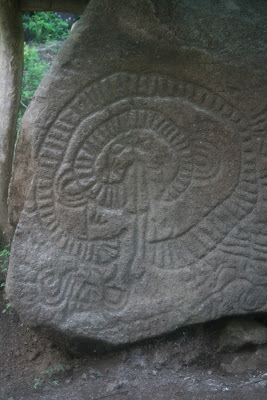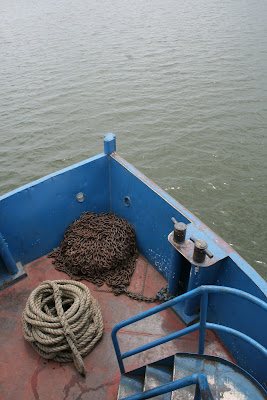Last week, Marci, Kiana, Morgan, and I traveled to Marci's great-aunt's summer home in Lake City, Colorado. It is located about 50 miles up the mountains from Gunnison, Colorado (another metropolis). The town is a quaint mining beauty - still VERY much living the silver boom of the 1870's (and not facing the reality of the 2011 need for tourists). The many old homes are stunning reminders that the wealth of a decade (the 1870's), once propelled this small village to one of the largest towns in the new state of Colorado. Both Gold and Silver brought THOUSANDS of American's (seeking their fortunes) to this remote high altitude abode.
 |
| American Basin - Far Above Lake City, Colorado |
But for us, this visit was about family. Sure, we saw the cute houses, visited the museum, and drove through ghost towns... but 82-year-old Ann was what REALLY made this trip special. Ann (a multi-year docent of the Hindsdale County Museum) took us on a personal tour. She told the rote stories she'd repeated a thousand other times (for strangers) and added a little spice for family. It was especially cute when she puffed out her chest in pride at being a part of the group who interpreted a message from an oppressed Italian Miner found on the wall of the old museum. She said she was happy to have been a part of telling that man's story (I don't think this was part of the traditional tour).
Ann is amazing. She is what we all hope to be graced with for a grandmother. She is sweet, kind, funny, playful, full of memory and life, and spunky enough to tell it like it is without fear of repercussion. More than once I wondered how nice it would have been to grow up blessed with a grandmother like this.
I spent many hours listening to her stories (some more than once). BUT WHAT A JOY!!! She is so gracious, lady-like, and loving. She made us feel welcome from the moment we got there to a devastated soul-mate when we left. We told jokes, played scrabble, saw the life that was important to her, listen to stories, had a 'weenie' roast (does anyone REALLY say that anymore?), and sat quietly on the porch in the gloaming of the day - enjoying one another's presence.
 |
| Ann Bowling posing (reluctantly) at the site of her husband Dewey's Final Rest |
 |
| Ann drives her 4x4 through a 12,000 ft Rocky Mountain stream |
Joy.
Something we do not see enough of - yet she has in abundance - and readily gives away.....














